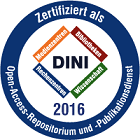Theobald, Hannah: Environmentally induced development of pulmonary monocyte-derived alveolar macrophages is controlled by Apolipoprotein E and Dectin-1. - Bonn, 2025. - Dissertation, Rheinische Friedrich-Wilhelms-Universität Bonn.
Online-Ausgabe in bonndoc: https://nbn-resolving.org/urn:nbn:de:hbz:5-81438
Online-Ausgabe in bonndoc: https://nbn-resolving.org/urn:nbn:de:hbz:5-81438
@phdthesis{handle:20.500.11811/12881,
urn: https://nbn-resolving.org/urn:nbn:de:hbz:5-81438,
author = {{Hannah Theobald}},
title = {Environmentally induced development of pulmonary monocyte-derived alveolar macrophages is controlled by Apolipoprotein E and Dectin-1},
school = {Rheinische Friedrich-Wilhelms-Universität Bonn},
year = 2025,
month = mar,
note = {The lung is one of the largest barrier tissues of our body, and is constantly exposed to the environment. By inhaling, the lungs do not only take up oxygen, which is crucial for cellular respiration, but also a plethora of pathogens and particulate matter from ambient air. Adaptation of pulmonary mononuclear phagocytes to these inhaled external stressors ensures the host’s fitness by increased pathogen clearance and tissue resilience. However, how the pulmonary immune system integrates this exposure to the environment on a cellular and molecular level remains elusive. Β-Glucan, a naturally occurring polysaccharide of fungal cell walls, is abundant in ambient air and has been linked to low-grade inflammation and innate immune training. In this thesis, we aim to investigate the effect of an acute or chronic β-glucan exposure on the murine pulmonary myeloid cell compartment and how this environmental adaptation is regulated on a cellular and molecular level. Single-cell transcriptomic and flow cytometric analyses revealed a CCR2-dependent recruitment of monocyte-derived CD11b+ alveolar macrophages (AM) to the alveolar space up to 21 days after exposure. Furthermore, the β-glucan mediated recruitment of CD11b+ AM to the alveolar space is dependent on the Dectin-1 – CARD9 signaling axis. CD11b+ AM expressed high levels of genes previously linked to a lipid-associated inflammatory monocyte-derived macrophage signature, such as Apoe, Cd63, Spp1, Gpnmb and Trem2, and were therefore termed ApoE+CD11b+ AM. Upon ex vivo restimulation with Lipopolysaccharide (LPS), ApoE+CD11b+ AM secreted increased levels of interleukin-6 (IL-6) compared to bona fide AM. Transfer of ApoE+CD11b+ AM to naïve mice preserved the increased IL-6 secretion indicating that the functional rewiring is taking place on the macrophage level. Myeloid cell-specific ApoE ablation impeded CD11b+ AM survival between day 3 to day 7 after β-glucan exposure by promoting excessive cholesterol accumulation. Further experiments showed a specific accumulation of cholesterol in the endoplasmic reticulum (ER) in ApoE-deficient CD11b+ AM, thus inhibiting autocrine M-CSF secretion into the alveolar space and lastly promoting cell death. Functionally, the β-glucan mediated environmental adaptation increased the phagocytic capacity of AM and thereby reduced the bacterial burden in an acute Legionella pneumophila infection. Furthermore, the β-glucan mediated environmental adaptation ameliorated fibrosis severity in an organoid model in vitro. Repetitive exposure to β-glucan increased the cellular abundance of ApoE+CD11b+ AM compared to a single exposure without introducing major changes in other immune cell populations. Collectively, we provide evidence of a macrophage-centric tissue-specific adaptation mechanism improving host fitness and resilience via integration of low-grade inflammation eliciting environmental cues.},
url = {https://hdl.handle.net/20.500.11811/12881}
}
urn: https://nbn-resolving.org/urn:nbn:de:hbz:5-81438,
author = {{Hannah Theobald}},
title = {Environmentally induced development of pulmonary monocyte-derived alveolar macrophages is controlled by Apolipoprotein E and Dectin-1},
school = {Rheinische Friedrich-Wilhelms-Universität Bonn},
year = 2025,
month = mar,
note = {The lung is one of the largest barrier tissues of our body, and is constantly exposed to the environment. By inhaling, the lungs do not only take up oxygen, which is crucial for cellular respiration, but also a plethora of pathogens and particulate matter from ambient air. Adaptation of pulmonary mononuclear phagocytes to these inhaled external stressors ensures the host’s fitness by increased pathogen clearance and tissue resilience. However, how the pulmonary immune system integrates this exposure to the environment on a cellular and molecular level remains elusive. Β-Glucan, a naturally occurring polysaccharide of fungal cell walls, is abundant in ambient air and has been linked to low-grade inflammation and innate immune training. In this thesis, we aim to investigate the effect of an acute or chronic β-glucan exposure on the murine pulmonary myeloid cell compartment and how this environmental adaptation is regulated on a cellular and molecular level. Single-cell transcriptomic and flow cytometric analyses revealed a CCR2-dependent recruitment of monocyte-derived CD11b+ alveolar macrophages (AM) to the alveolar space up to 21 days after exposure. Furthermore, the β-glucan mediated recruitment of CD11b+ AM to the alveolar space is dependent on the Dectin-1 – CARD9 signaling axis. CD11b+ AM expressed high levels of genes previously linked to a lipid-associated inflammatory monocyte-derived macrophage signature, such as Apoe, Cd63, Spp1, Gpnmb and Trem2, and were therefore termed ApoE+CD11b+ AM. Upon ex vivo restimulation with Lipopolysaccharide (LPS), ApoE+CD11b+ AM secreted increased levels of interleukin-6 (IL-6) compared to bona fide AM. Transfer of ApoE+CD11b+ AM to naïve mice preserved the increased IL-6 secretion indicating that the functional rewiring is taking place on the macrophage level. Myeloid cell-specific ApoE ablation impeded CD11b+ AM survival between day 3 to day 7 after β-glucan exposure by promoting excessive cholesterol accumulation. Further experiments showed a specific accumulation of cholesterol in the endoplasmic reticulum (ER) in ApoE-deficient CD11b+ AM, thus inhibiting autocrine M-CSF secretion into the alveolar space and lastly promoting cell death. Functionally, the β-glucan mediated environmental adaptation increased the phagocytic capacity of AM and thereby reduced the bacterial burden in an acute Legionella pneumophila infection. Furthermore, the β-glucan mediated environmental adaptation ameliorated fibrosis severity in an organoid model in vitro. Repetitive exposure to β-glucan increased the cellular abundance of ApoE+CD11b+ AM compared to a single exposure without introducing major changes in other immune cell populations. Collectively, we provide evidence of a macrophage-centric tissue-specific adaptation mechanism improving host fitness and resilience via integration of low-grade inflammation eliciting environmental cues.},
url = {https://hdl.handle.net/20.500.11811/12881}
}






